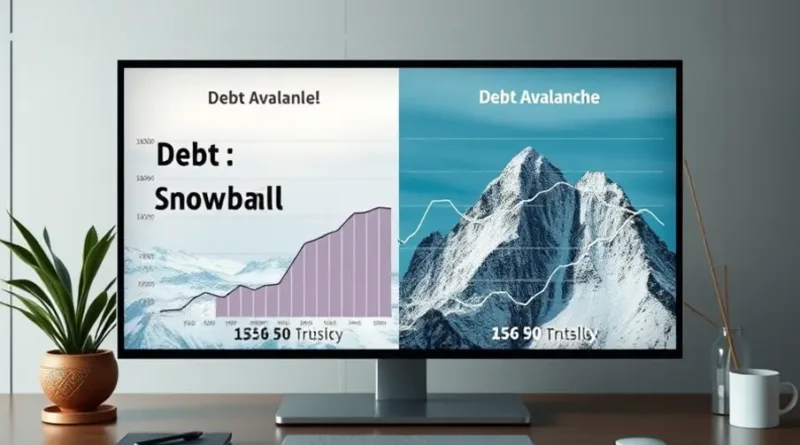The Debt Snowball vs. Avalanche: Which Is Better?
Managing debt can often feel like an uphill battle, with different strategies presenting various advantages and challenges. Among the most popular debt repayment strategies are the Debt Snowball and the Debt Avalanche methods. Both are designed to help you reduce your debts efficiently, but they approach the task in fundamentally different ways. In this post, we’ll take a deep dive into each method, their pros and cons, and help you determine which one is the best fit for your financial situation.
Understanding the Debt Snowball Method
The Debt Snowball method is a strategy where you focus on paying off your smallest debts first while making minimum payments on larger debts. Once the smallest debt is eliminated, you take what you were paying on that debt and apply it to the next smallest one, creating a snowball effect.
Pros of the Debt Snowball
- Psychological Wins: By knocking out small debts quickly, you gain momentum and motivation. The feeling of paying off a debt can be a significant psychological boost and keeps you engaged in the process.
- Simple to Follow: The plan is straightforward: list your debts, focus on the smallest, and move up. This clarity can be appealing for those who might find debt repayment overwhelming.
- Increased Motivation: Every time you eliminate a debt, it reinforces positive financial behavior, encouraging you to stick with the plan.
Cons of the Debt Snowball
- Potentially Higher Interest Costs: By ignoring higher-interest debts, you may pay more in interest over time compared to the Avalanche method.
- Longer Repayment Time: This method can take longer to tackle overall debt, especially if the smallest debts are significantly smaller than larger, high-interest debts.
Understanding the Debt Avalanche Method
On the other end of the spectrum is the Debt Avalanche method, where you focus on paying off debts with the highest interest rates first. This approach minimizes the total interest paid and speeds up the repayment process.
Pros of the Debt Avalanche
- Lower Total Interest Costs: By targeting high-interest debts first, you reduce the total amount paid over time, ultimately compounding your savings.
- Faster Debt Repayment: This method can lead to quicker debt elimination, as you’re focusing on reducing the most costly debts first.
- Financial Efficiency: If you’re someone who prefers a more mathematical approach, this method aligns with a strategy focused on numbers and financial optimization.
Cons of the Debt Avalanche
- Delayed Gratification: You might not see immediate results as the highest interest debts could also be larger, which may dampen motivation.
- Complexity: Figuring out the best sequence to pay off your debts requires more analysis and sometimes feels overwhelming compared to the Snowball method.
Which Method Is Better for You?
Choosing between Debt Snowball and Debt Avalanche ultimately depends on your personality and financial situation. If you’re motivated by small wins and need a boost in confidence, the Snowball might be the best choice for you. However, if your main priority is minimizing interest costs and you can handle a more disciplined approach, the Avalanche method is likely the better option.
Combining Both Methods
Another approach worth considering is a hybrid strategy. Start with the Snowball method to gain momentum by paying off a few smaller debts, then switch to the Avalanche method to save on interest. This way, you get the best of both worlds—quick wins and long-term savings.
Conclusion
In conclusion, both the Debt Snowball and Debt Avalanche methods have their unique strengths and weaknesses. Ultimately, the best debt repayment strategy is the one that resonates most with you and your financial goals. Take the time to analyze your situation, consider your emotional responses to debt repayment, and choose the method that will keep you motivated in your journey towards financial freedom.




